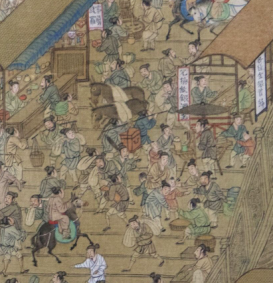This research project examines that most basic fact of economic history—prices—in China during the Ming period (1368–1644), though particularly its second half, when price data become available. Concerned in the first instance with generating useful economic data, the project uses price records to explore the social and cultural experience of facets of the Ming commercial transition: the commoditization of everyday life, the keeping of financial accounts, the consumption of luxury goods, the relationship between staple prices and subsistence in times of crisis, and the attempts by the state to intervene in prices. Although I seek to contribute to the economic history of the period, the book that I will complete at the MPIGW is likelier to become a social history of prices, addressing not only what things cost and how prices affected livelihood decisions, but how prices gave voice to confusions over economic, social, and moral values during a period of destabilizing environmental and economic change. The collapse of price norms through the first half of the seventeenthth century—in essence and effect, a price revolution—gives this topic particular salience for understanding the collapse of the Ming dynasty as well as the effects of China’s growing entanglement with the emerging global economy.

